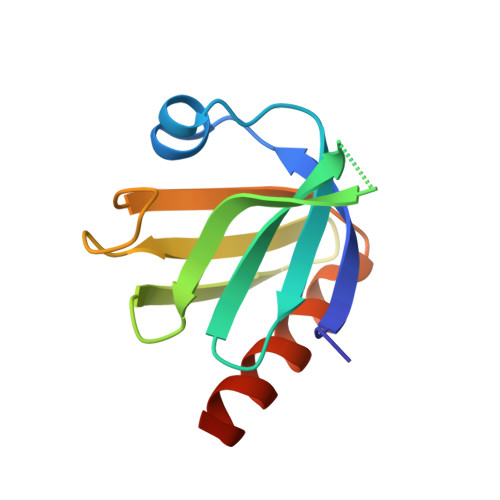An Integrin Phosphorylation Switch: The Effect of {Beta}3 Integrin Tail Phosphorylation on Dok1 and Talin Binding.
Oxley, C.L., Anthis, N.J., Lowe, E.D., Vakonakis, I., Campbell, I.D., Wegener, K.L.(2008) J Biol Chem 283: 5420
- PubMed: 18156175
- DOI: https://doi.org/10.1074/jbc.M709435200
- Primary Citation of Related Structures:
2V76 - PubMed Abstract:
Integrins play a fundamental role in cell migration and adhesion; knowledge of how they are regulated and controlled is vital for understanding these processes. Recent work showed that Dok1 negatively regulates integrin activation, presumably by competition with talin. To understand how this occurs, we used NMR spectroscopy and x-ray crystallography to investigate the molecular details of interactions with integrins. The binding affinities of beta3 integrin tails for the Dok1 and talin phosphotyrosine binding domains were quantified using 15N-1H hetero-nuclear single quantum correlation titrations, revealing that the unphosphorylated integrin tail binds more strongly to talin than Dok1. Chemical shift mapping showed that unlike talin, Dok1 exclusively interacts with the canonical NPXY motif of the beta3 integrin tail. Upon phosphorylation of Tyr 747 in the beta3 integrin tail, however, Dok1 then binds much more strongly than talin. Thus, we show that phosphorylation of Tyr 747 provides a switch for integrin ligand binding. This switch may represent an in vivo mechanism for control of integrin receptor activation. These results have implications for the control of integrin signaling by proteins containing phosphotyrosine binding domains.
Organizational Affiliation:
Department of Biochemistry, University of Oxford, South Parks Road, Oxford OX1 3QU, United Kingdom.


















